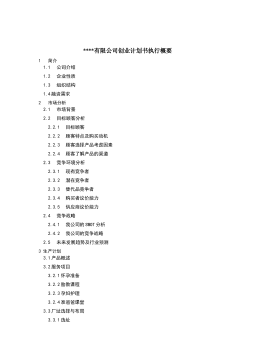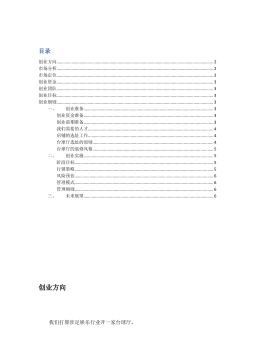USST_Arts_117101349基于贝叶斯推断和动力测试的既有砌体结构性能分析
VIP免费
摘 要
由于砌体材料具有良好的物理性能,且施工方法简便,造价低廉,所以至今
仍是我国主导的建筑材料。砌体结构在我国有着悠久的历史,岁月的沉淀给这些
已有的建筑结构带来了潜在的威胁,所以对于这些既有砌体结构的性能检测也变
得尤为重要。虽然原位测试及钻芯法等现场测试方法是当前主要的检测方法,然
而,这些方法会对结构造成新的损伤,所以这些方法仍然存在着一定的缺陷,并
不完善。因此,基于无损的动力测试方法的结构性能检测方法受到了越来越多的
关注。频率是既有砌体结构安全性的重要指标,由于损伤情况、结构形式以及测
试方法等不确定因素的影响,导致其现场实测结果数据量有限且非常离散,难以
确定合理的估计值。传统的回归分析方法完全依赖于实测样本,如果实测样本离
散,也会造成结果判断的严重偏差。为解决这一问题,尝试采用贝叶斯推断方法,
通过马尔科夫蒙特卡洛(Markov Chain Monte Carlo, MCMC)抽样,结合先验信息,
将结构频率作为未确知量,形式上借助数理统计的方法来处理。
首先通过三维数值模拟确定结构动力测试的采样频率以及加速度传感器的布
置方案,然后分别采用环境激励与人工激励方法,获得结构的加速度时程曲线,
通过快速傅里叶变换(Fast Fourier Transform, FFT)获取结构基本频率的样本
数据。运用贝叶斯推断方法,通过 Metropolis-Hasting(MH)抽样,结合对基本频
率的先验判断,构建基本频率的后验概率密度模型,从而确定结构基本频率的估
计值。通过有限元模型,拟合结构频率与弹性模量之间的关系式,反算出结构等
效弹性模量的估计值。结果表明,以上方法在实测样本量少、噪音影响较大的情
况下具有很好的鲁棒性,能够较快收敛于稳定、合理的后验概率密度模型,为推
断结构弹性模量提供可靠的基础。
针对某既有砌体结构,对其进行动力测试,结合先验判断,获取其频率的后
验概率密度模型,根据有限元模型反算结构等效弹性模量估计值,验证本文所提
方法的工程应用。说明该方法可为砌体结构性能的长期监测提供一种经济、有效
的手段。
关键词:砌体结构 贝叶斯推断 动力测试 基本频率 等效弹性模量 有
限元模拟
ABSTRACT
Because of the good physical properties of its materials, simple construction
method and low cost, masonry materials are still the dominant building materials in
China. Masonry structures have a long history in our country. With the times going,
these existing masonry structures have a lot of potential threats, so the performance
test of the existing masonry structures have become particularly important. The in situ
testing or core sampling method is not desirable because of the new damages to the
structures. So the structure performance detection methods based on the
non-destructive dynamic test become more and more popular. The basic frequency of
existing masonry structures is a key indicator of their safety, its measured values are
of high diversity and inadequate to make convincing estimations because of the
uncertain nature of the existing damages and structural configurations. The traditional
regression analysis method will totally depend on the measured values, if the
measured values are discrete, it will lead to serious deviation of results. To address the
issue, the Bayesian inference was applied through a Markov Chain Monte Carlo
(MCMC) sampling method, combined with the prior judgments, the basic frequency
was taken as an uncertain variable and inferred using statistical methods.
First the sampling frequency and an accelerometer layout was determined based
on 3 dimensional numerical simulations, and then the accelerometers were mounted.
The acceleration time history values of the specimens were measured through ambient
vibration tests and forced vibration tests, and the basic frequencies were calculated by
Fast Fourier Transform (FFT). A Bayesian inference for the basic frequencies was
applied through a Metropolis-Hasting(MH)sampling, and combined with the prior
judgments, the posterior probability density functions (PDFs) of the basic frequencies
were established. Estimations on the basic frequencies were made based on the PDFs,
and estimations on the equivalent elasticity modulus of the structure were calculated
by the finite element simulation. The proposed method was demonstrated to be robust
for limited and noisy measured basic frequencies, and would readily lead to stable and
appropriate posterior PDFs, which were strong bases for elasticity modulus
estimation.
Feasibility of the proposed method was illustrated through the dynamic test on
an existing masonry building. Combined with the priori judgment, the posterior PDFs
were obtained, and estimations on the equivalent elasticity modulus of the structure
were calculated by the finite element simulation. The method can be economically
and effectively used to monitor the performances of existing masonry structures.
Key Word: masonry structure, Bayesian inference, dynamic test, basic
frequency, equivalent elastic modulus, finite element
modeling
目 录
中文摘要
ABSTRACT
第一章 绪论 ..................................................................................................................... 1
1.1 引言 ........................................................................................................................ 1
1.2 结构现场测试方法 ............................................................................................... 2
1.2.1 常用测试方法 ................................................................................................ 2
1.2.2 结构动力测试方法 ........................................................................................ 2
1.3 测试数据处理 ....................................................................................................... 4
1.3.1 最小二乘法 .................................................................................................... 4
1.3.2 极大似然估计法 ............................................................................................ 4
1.3.3 神经网络法 .................................................................................................... 5
1.3.4 贝叶斯推断方法 ............................................................................................ 5
1.4 本文主要工作内容 ............................................................................................... 7
第二章 砌体试件动力测试 ............................................................................................ 9
2.1 测试方案 ................................................................................................................ 9
2.1.1 试件材料及规格 ............................................................................................ 9
2.1.2 试验设备及现场环境 .................................................................................. 10
2.2 砌体试件的有限元模拟 ......................................................................................11
2.2.1 有限元模型建立及计算 ..............................................................................11
2.2.2 结构敏感性分析 .......................................................................................... 13
2.3 砌体现场动力测试 ............................................................................................. 16
2.3.1 测试系统 ...................................................................................................... 16
2.3.2 测点布置 ...................................................................................................... 17
2.3.3 测试方案 ...................................................................................................... 18
2.4 测试数据处理 ..................................................................................................... 18
2.4.1 环境激励作用下的测试数据 ..................................................................... 20
2.4.2 人工激励作用下的测试数据 ..................................................................... 21
2.4.3 测试数据对比分析 ...................................................................................... 23
第三章 砌体试件的基本频率和弹性模量识别 ......................................................... 24
3.1 频率后验概率密度模型 ..................................................................................... 24
3.1.1 贝叶斯推断实现过程 .................................................................................. 24
3.1.2 频率后验概率密度模型 ............................................................................. 26
3.2 等效弹性模量后验概率密度模型 .................................................................... 34
3.3 频率及等效弹性模量预测................................................................................. 36
3.3.1 预测原理 ...................................................................................................... 37
3.3.2 频率及等效弹性模量预测结果 ................................................................. 37
第四章 实际工程案例研究分析 .................................................................................. 43
4.1 工程背景 .............................................................................................................. 43
4.1.1 建筑特色与风格 .......................................................................................... 43
4.1.2 房屋概况 ...................................................................................................... 44
4.2 有限元模拟.......................................................................................................... 44
4.2.1 有限元模型建立 .......................................................................................... 44
4.2.2 有限元模型计算 .......................................................................................... 46
4.3 结构现场动力测试 ............................................................................................. 47
4.3.1 测点布置 ...................................................................................................... 47
4.3.2 动力测试数据采集 ...................................................................................... 48
4.3.3 动力测试数据处理 ...................................................................................... 49
4.4 结构频率与等效弹性模量识别 ........................................................................ 53
4.4.1 频率后验概率密度模型 ............................................................................. 53
4.4.2 等效弹性模量识别 ...................................................................................... 57
4.4.3 频率及等效弹性模量预测 ......................................................................... 60
第五章 结论与展望....................................................................................................... 70
5.1 结论 ...................................................................................................................... 70
5.2 展望 ...................................................................................................................... 71
附图.................................................................................................................................. 72
参考文献 ......................................................................................................................... 79
在读期间公开发表的论文和承担科研项目及取得成果 .......................................... 82
致谢.................................................................................................................................. 83
第一章 绪论
1
第一章 绪论
1.1 引言
中国是砌体大国,砌体结构在我国有着悠久的历史,比如两千多年前的万里
长城、秦代修建的都江堰水利工程等都是砌体结构,如图 1-1 所示。
图1-1 我国已有的砌体结构
由于砖、石等材料具有良好的物理性能,且施工方法简便,造价低廉,可就
地取材、生产,所以至今仍是我国主导的建筑材料。砌体结构在我国现存的民用
住宅建筑中的比例曾一度达到了 90%[1]。在长期的使用过程中,由于受到环境因素、
地震荷载以及风荷载等的共同作用,导致结构发生了不同程度的损伤,使得结构
的力学参数发生了变化。结构的力学参数可分为静力参数和动力参数,与其对应
的获得不同力学参数的结构测试方法可分为静力测试方法和动力测试方法。由于
在进行静力测试时,需要对结构施加大量的荷载,不仅费时费力,而且可能会对
结构造成无法修复的损伤,所以并不完善。因此,使得动力测试方法受到了更广
泛的关注。
对于既有的砌体结构而言,由于砌筑方法多样、结构形式多变、损伤情况复
杂等原因,导致对其进行性能分析和评价相当困难。受现场条件和测试手段的限
制,动力测试所获得的样本个数有限,且具有极强的离散性。传统的回归分析或
极大似然估计方法,在分析过程中完全依赖于测试数据,仅仅基于少数高度离散
的实测样本值来估计动力参数,会造成严重偏差[2]。本课题旨在研究一种较为完善
的数据分析方法,即贝叶斯推断方法,处理砌体结构动力测试得到的频率实测样
本,将该样本作为未确知量,在形式上采用随机变量的数理统计方法来处理[3]。
当测试所获取的样本数据较少且样本值较为离散时,应用贝叶斯推断方法,
可以有效提取并逐次积累样本中的总体信息,并结合来自已知的规律或工程经验
(a)长城
(b)都江堰
相关推荐
-
我国基层财政困难的制度成因分析与对策研究VIP免费
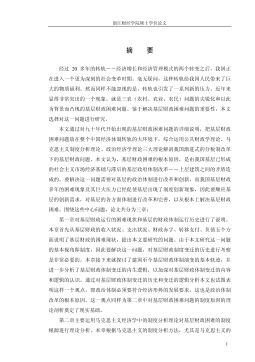
 2024-09-20 33
2024-09-20 33 -
我国煤电产业链纵向交易合约机制研究VIP免费
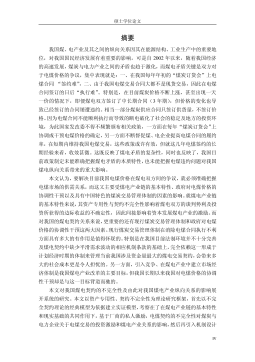
 2024-09-20 28
2024-09-20 28 -
生产要素视角下的上海市产业结构优化研究VIP免费
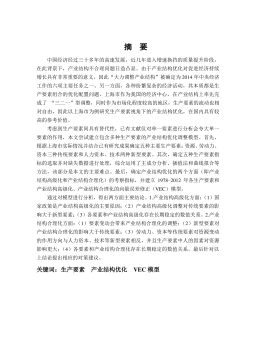
 2025-01-09 7
2025-01-09 7 -
我国银行业结构与经济结构关系研究VIP免费
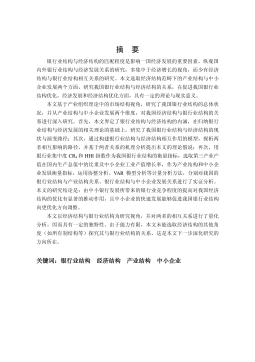
 2025-01-09 7
2025-01-09 7 -
大数据视角下农业供应链金融研究VIP免费

 2025-01-09 6
2025-01-09 6 -
跨国大型综合超市的规划研究VIP免费
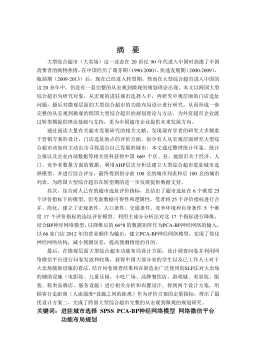
 2025-01-09 6
2025-01-09 6 -
跨境电商农产品质量安全问题研究VIP免费
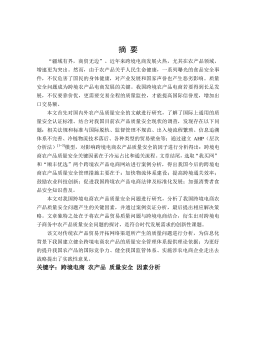
 2025-01-09 7
2025-01-09 7 -
世界市场的虚拟化与我国国际电子商务发展方向研究VIP免费
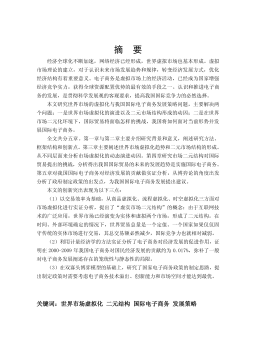
 2025-01-09 9
2025-01-09 9 -
中国政府对电力行业的价格规制问题研究VIP免费
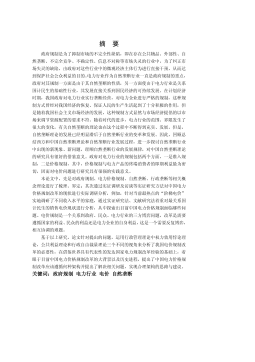
 2025-01-09 14
2025-01-09 14 -
中小企业信息化系统集成技术研究VIP免费
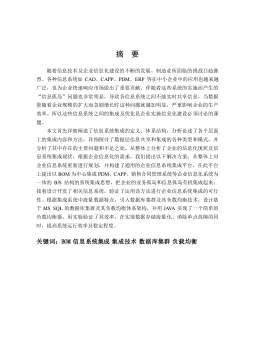
 2025-01-09 14
2025-01-09 14
作者:牛悦
分类:高等教育资料
价格:15积分
属性:86 页
大小:5.14MB
格式:PDF
时间:2025-01-09
相关内容
-

跨国大型综合超市的规划研究
分类:高等教育资料
时间:2025-01-09
标签:无
格式:PDF
价格:15 积分
-

跨境电商农产品质量安全问题研究
分类:高等教育资料
时间:2025-01-09
标签:无
格式:PDF
价格:15 积分
-

世界市场的虚拟化与我国国际电子商务发展方向研究
分类:高等教育资料
时间:2025-01-09
标签:无
格式:PDF
价格:15 积分
-

中国政府对电力行业的价格规制问题研究
分类:高等教育资料
时间:2025-01-09
标签:无
格式:PDF
价格:15 积分
-

中小企业信息化系统集成技术研究
分类:高等教育资料
时间:2025-01-09
标签:无
格式:PDF
价格:15 积分


